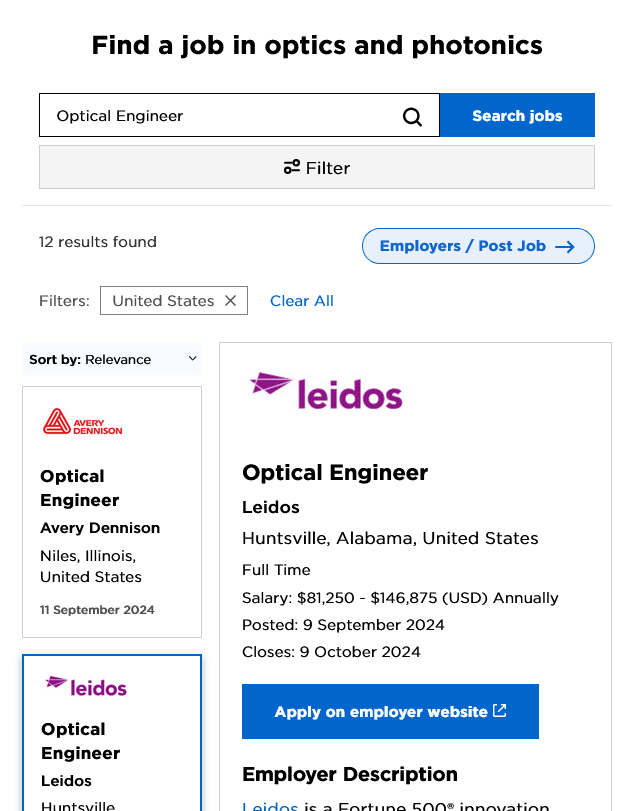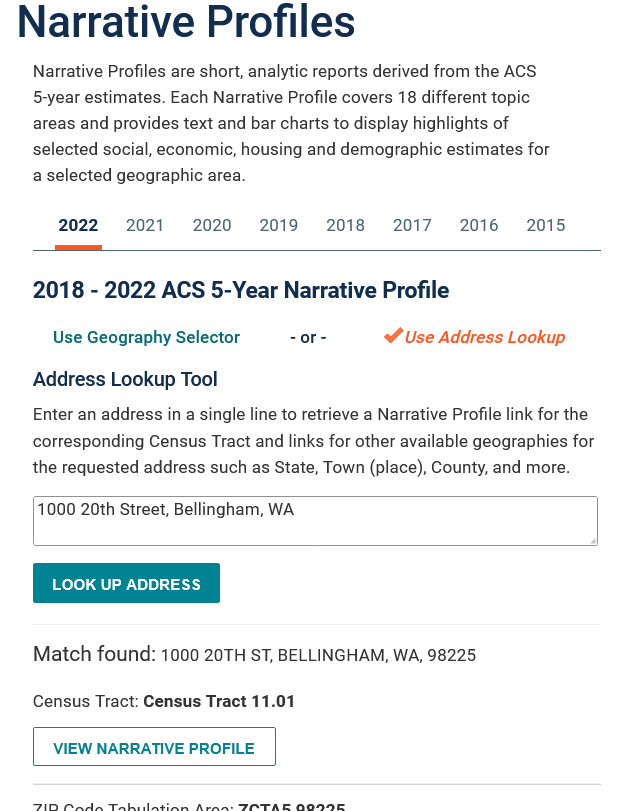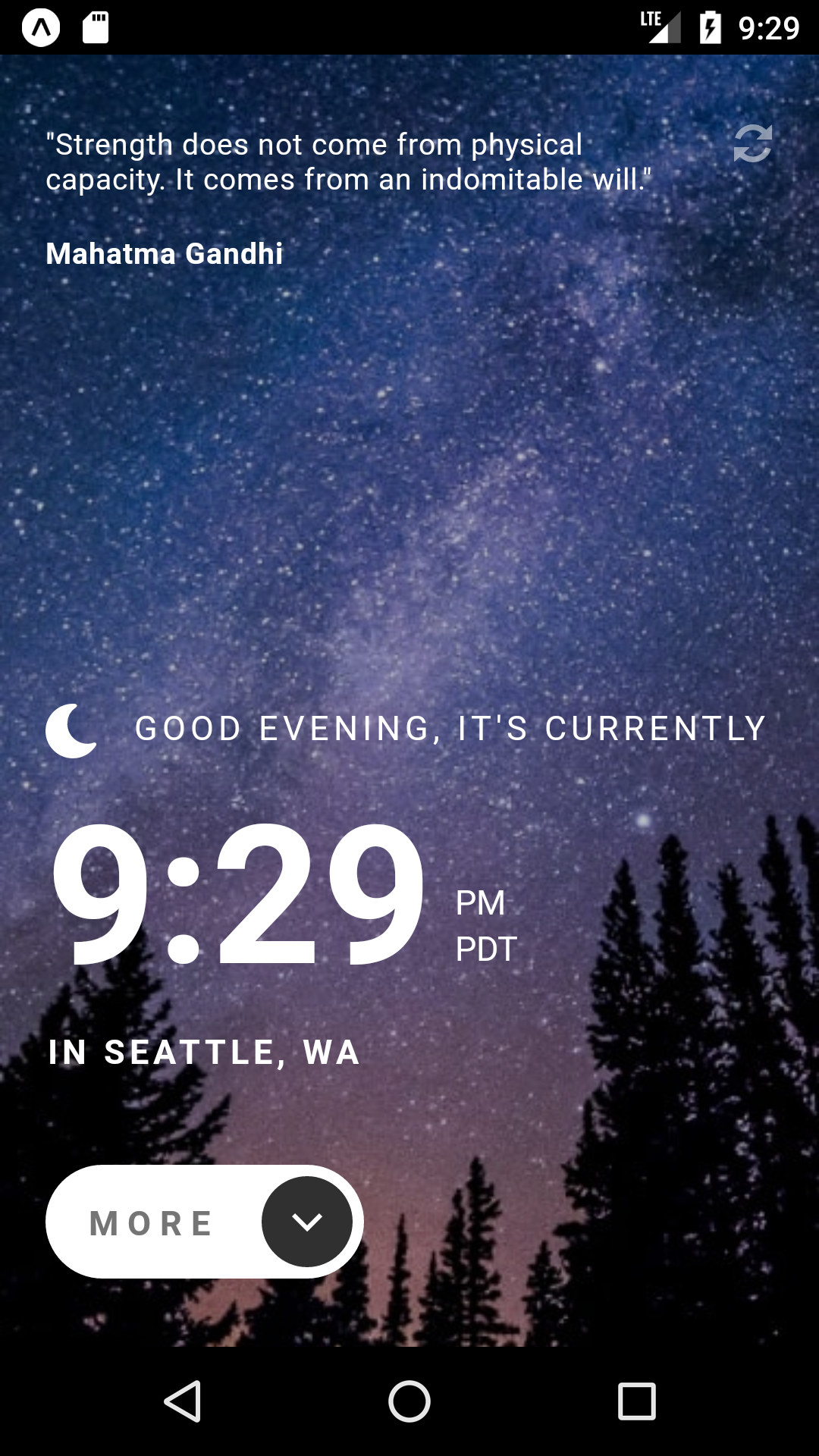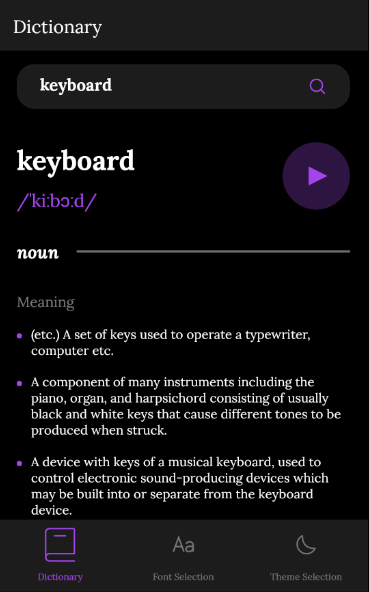Portfolio
Welcome to my portfolio of some of my favorite projects!
SPIE Career Center

My main project as a Software Development Intern at SPIE was modernizing the Career Center, a web application connecting over twenty-four thousand members and thousands of non-members to opportunities in the optics and photonics industry. The previous Career Center was a single huge file created by a third party that was neither responsive in UI design nor data load times, and our goal was to bring it in-house with a modern tech stack, to make it more effective for current needs and sustainable long-term.
We created a responsive single-page application (SPA) with UI components for searching for jobs, creating job posts, managing your job posts, etc. using React in TypeScript, Redux Toolkit for state management, Bootstrap for responsive UI components, HTML and CSS (with LESS, a preprocessor that extends CSS).On the back-end, we built a REST API with ASP.NET MVC in C# for our front-end to query when interacting with the database to add new job posts, search existing job posts, etc.
I collaborated closely with the other Software Development Intern in our department in the first half of my internship, distributing feature development based on availability, familiarity and interest. After that, I was the primary developer on the project, progressing it through beta testing and deployment to general availability. Throughout the development cycle, I also communicated about project requirements with project managers; refined wireframes and prototypes with UX designers in Figma and Axure RP; conducted code reviews with other developers; fixed bugs reported by QA engineers and incorporated feedback from business and sales managers.
The new Career Center received glowing feedback both within SPIE as a maintainable and scalable solution to business needs and from its ever-growing customer base as a significant upgrade in user experience and satisfaction.
Check out the live Career Center!
Address Lookup Widgets

I developed a widget to make Census neighborhood data more easily accessible toward the end of my Software Engineering Fellowship at the Census Bureau. The problem I was looking to solve was that when users wanted to see data for their neighborhood, they had to approximate that area with their Census Tract, but tracts have unintuitive names like “Census Tract 401.03” and can be tricky to figure out.
I took ownership of the project to create a scalable Census address lookup widget where a user could enter an address and get back its geography labels — with the goal of it being added in various places around Census.gov with a similar need. Similar to the other projects during my Fellowship at the Census, I created the tool using JavaScript, HTML and CSS with Bootstrap and jQuery.
To make the widget as adaptable for the Census Bureau’s needs as possible, I created multiple versions of the widget:
- The main version that fetches the most common geography labels
- A simplified version of the widget for a single geography: Census tracts for looking up neighborhood data (the original use case)
- An extended version of the widget that also links to narrative profiles for the geographies on the Census Narrative Profiles app
The Census Bureau ultimately added the extended version of my widget to the Census Narrative Profiles web app and may use it in other parts of the site in the future.
Check out the widget in-action in the live Census Narrative Profiles Tool (under “Use Address Lookup”), the source code and our presentation slides with more info!
EEO Tables Tool

During my Software Engineering Fellowship at the Census Bureau, I also significantly improved user access to Equal Employment Opportunity (EEO) data via the EEO Tables Tool – more than tripling the number of data tables available for each geography.
EEO data is a custom tabulation of data from the American Community Survey used to support federal anti-discrimination policies. The EEO Tables Tool is a web app for accessing and searching through EEO data. The tool was started by another contractor, who I collaborated with to design and implement improvements that enhanced usability and extended tool functionality to support a much wider variety of data tables: increasing 6 available data tables to 20 data tables for every geography. I also collaborated with another Software Engineering Fellow on a feature for looking up metropolitan and micropolitan statistical areas (MSAs) that have been suppressed in the EEO tabulation due to not meeting data thresholds. We coded this web app in JavaScript, HTML and CSS, with the help of libraries like jQuery and Bootstrap.
The other Fellow and I presented the EEO Tables Tool Project to more than 150 Census Bureau staff and had the honor of being selected as 1 of 7 projects (out of 29 projects in total) to also present to directorate-level upper management (OPCOM).
Check out the live EEO Tables Tool, the source code and our slides we presented on Demo Day!
Clock Mobile App

This clock mobile app provides time and date information alongside time-adaptive theming and inspirational quotes. I coded the app in React Native with Expo so that it works on both Android and iOS phones and automated testing of fundamental functionality with Jest. I queried the IP API to for the location data, the World Time API for the time/date data and the Quotable API for the quote generation. I enjoyed the opportunity to create an aesthetically-pleasing app I could see myself and others using if I paid to publish it to the app store.
Check out the codebase!
Dictionary Mobile App

This dictionary mobile app is a project I developed in collaboration with another student at Western Washington University. The app allows users to search words’ definitions and pronunciation (including an audio recording of the pronunciation) and customize the font and theme. The app was created in React Native with Expo so that it works on both Android and iOS devices, and it features automated functional testing with our Jest test suite. I developed features such as the search (querying the Free Dictionary API and organizing/displaying the results) and dark/light mode functionality and my teammate developed the navigational components and some of the automated tests.
Check out the codebase!